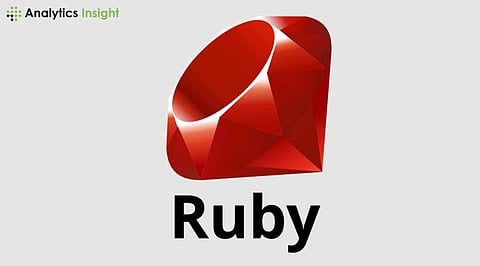

Ruby on Rails (RoR) has been a popular web development framework since its inception in 2005. Despite the rise of newer technologies Ruby on Rails continues to be a relevant and valuable tool for developers in 2024. Known for its simplicity, productivity, and convention over configuration philosophy, Rails remains a top choice for building scalable maintainable web applications.
Here are the key reasons why Ruby on Rails is still a relevant and thriving framework in 2024
One of the standout features of Ruby on Rails is its convention over the configuration approach. This philosophy reduces the need for developers to make numerous decisions about code structure and setup, allowing them to focus more on building features. RoR provides sensible defaults minimizing configuration and simplifying development. This leads to faster development cycles and increases overall productivity.
Ruby on Rails is ideal for startups and projects that need rapid prototyping. Developers can quickly create functional applications, thanks to Rails, extensive libraries known as gems built-in tools, and scaffolding. This makes it easy to build MVP minimum viable products in a short time frame.
The Ruby on Rails community is one of the most active and supportive in the web development space. With thousands of contributors and developers, Rails has a vast number of open-source libraries and gems that extend its capabilities. Whether it’s authentication payment processing or background job management, there’s a gem for almost any use case.
Despite being over 15 years old Ruby on Rails continues to evolve with regular updates and improvements. The framework maintainers ensure that Rails stays up to date with modern development trends and security practices. The introduction of Hotwire and Stimulus in recent years demonstrates the ability of Rails to stay current with frontend development embracing a modern minimal JavaScript approach to creating dynamic user interfaces.
One of the misconceptions about Ruby on Rails is that it doesn't scale well. However, with proper optimization and infrastructure, Rails applications can scale effectively. High-profile platforms such as GitHub Shopify and Basecamp are built using Ruby on Rails and handle millions of users every day. Rails can scale horizontally by adding more servers and distributing the load across a robust infrastructure.
Rails has also made significant improvements in performance over the years The latest versions include optimizations for speed memory management and garbage collection These enhancements along with modern hosting solutions and cloud infrastructure ensure that Rails apps can perform efficiently even under heavy load.
Ruby on Rails emphasizes clean and readable code. The Ruby programming language itself is designed to be human-readable making it easier for developers to write and maintain. Rails encourages developers to follow best practices such as DRY (Dont Repeat Yourself) and SOLID principles, which help keep the codebase clean maintainable, and scalable over time.
For businesses that need long-term software solutions, Rails offers a solid framework for maintainability. The convention-based structure of Rails applications makes it easier for teams to onboard new developers and maintain codebases over time without a steep learning curve. Its focus on backward compatibility and continuous updates further ensures that legacy applications can be updated and maintained with ease.
Ruby on Rails provides built-in security features that help developers mitigate common vulnerabilities such as SQL injection cross-site scripting XSS and cross-site request forgery (CSRF). Rails developers also have access to regular security updates ensuring that applications built on the framework remain secure.
As a mature framework, Ruby on Rails is a stable and battle-tested tool. It has been used to build and run large-scale web applications for many years proving its reliability in real-world scenarios. This stability is critical for businesses that need dependable long-term solutions for their web applications.
Ruby on Rails with its rapid development capabilities can significantly reduce development costs. The framework's built-in tools ready-to-use gems and strong community support mean that developers can build applications faster reducing the time and resources needed to complete a project.
Ruby on Rails is open-source which means there are no licensing fees. This is particularly appealing to startups and small businesses that want to build robust web applications without incurring high initial costs.
One of the latest innovations in the Rails ecosystem is Hotwire, which introduces a new way to build modern dynamic web applications with minimal JavaScript. Hotwire uses Turbo and Stimulus to update parts of the page without needing a full page reload making applications more responsive. This new technology simplifies the development of interactive applications while reducing complexity offering developers a simpler alternative to heavy frontend frameworks like React or Vue.
The addition of Hotwire demonstrates Rails ability to adapt to modern development trends while staying true to its philosophy of simplicity and developer happiness. Rails continues to innovate and provide developers with new tools to build cutting-edge web applications without sacrificing the ease of development.
Rails rapid development capabilities make it a perfect choice for startups looking to build a minimum viable product (MVP) quickly. With Rails, developers can iterate faster deploy changes seamlessly, and test ideas in real time.
Many popular e-commerce platforms such as Shopify have been built on Ruby on Rails. Its flexibility and scalability make it an excellent framework for developing and managing large online stores.
Ruby on Rails is also used to build powerful content management systems offering a strong foundation for developers who need to create custom CMS solutions tailored to specific business needs.
Ruby on Rails continues to thrive in 2024 thanks to its developer-friendly conventions, strong community support, and ability to adapt to new technologies like Hotwire. With its focus on simplicity productivity and maintainability, Rails remains an excellent choice for startups small businesses, and large enterprises alike. Whether you’re building an MVP scaling a global platform or creating a complex web application, Ruby on Rails offers the tools and flexibility needed to succeed in today's competitive web development landscape
